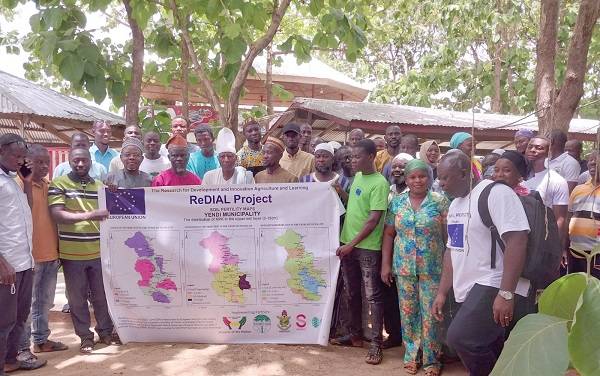The Northern Region's Yendi municipality has started an initiative to create soil fertility maps to aid farmers in their work.
The initiative, known as Research for Development and Innovation in Agriculture and Learning (ReDIAL), aims to assist farmers in increasing yields.
To assist farmers and other stakeholders in their operations, maps of soil fertility would be created as part of the project and provided to them.
With support from the EU, it is being collaboratively carried out by the Kwame Nkrumah University of Science and Technology (KNUST), Friends of the Nation, and Tropenbos Ghana.
Bini, Zagban, Gbungbaliga, Gukpegu, Kuga, Gnani, Paaduli, Kpassani, and Sunsong are a few of the regions from which samples were gathered for the study.
Farmers, input vendors, employees of the Yendi Municipal Assembly and the Ministry of Agriculture, as well as people with disabilities, traditional leaders, and assembly members, were among those present for the launch.
Relevance
Soil fertility metrics are a requirement in soil fertility management, according to Kyereh Boateng, a lecturer in natural resources at Kwame Nkrumah University of Science and Technology (KNUST), who also initiated the study.
However, he said that it was difficult for farmers in the nation to conduct on-site measurements and laboratory analyses of soil fertility indicators before and during crop production.
The instructor says that resolving these issues in the municipality will improve farmers' judgments and the design of policies for crop nutrient management profiles and soil fertility maps.
Israel Boateng Yeboah, a different lecturer at KNUST, recommended a crop rotation strategy as an option for farmers to increase soil fertility.
He said that although using organic fertilizer improved soil qualities and boosted crop output, using synthetic fertilizer had a long-term impact on the soil's chemical composition.
He identified a few elements for soil enhancement, such as waste agricultural residues including maize stover, maize husk, rice stalks, groundnut pods, cowpea pods, and fish pond effluent.
Other examples include animal manure made from sheep and goat droppings.
Prof. Emmanuel Acheampong, a different instructor at KNUST, challenged the participants to use what they had learned on their farms to increase yields.
After the launch, the maps of soil fertility were distributed to the recipients.


